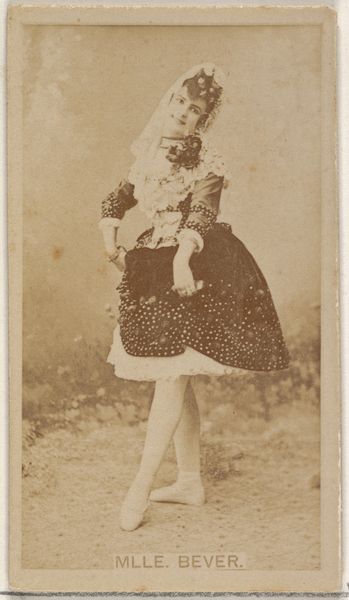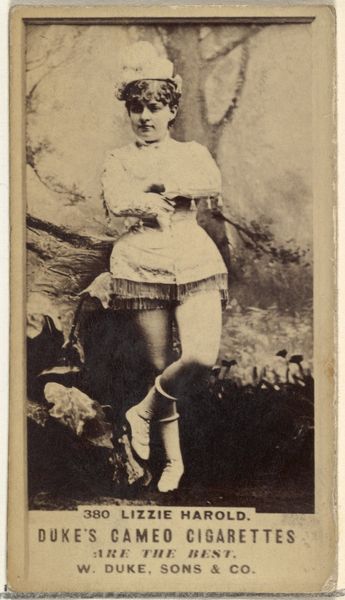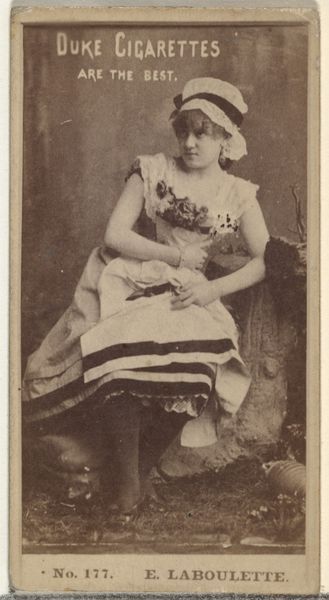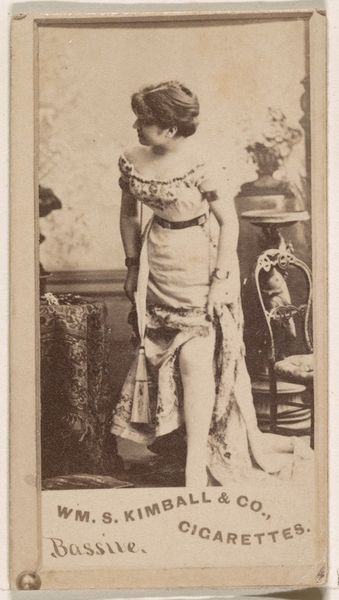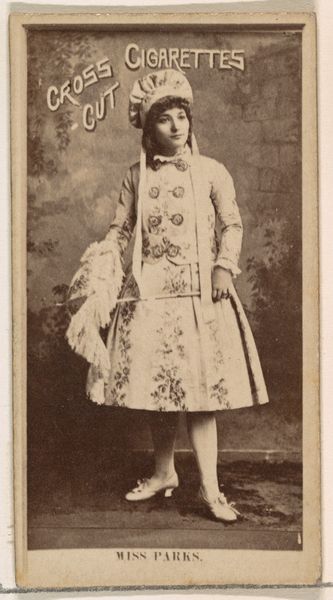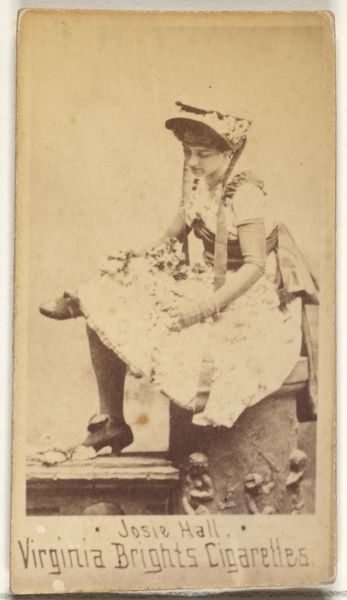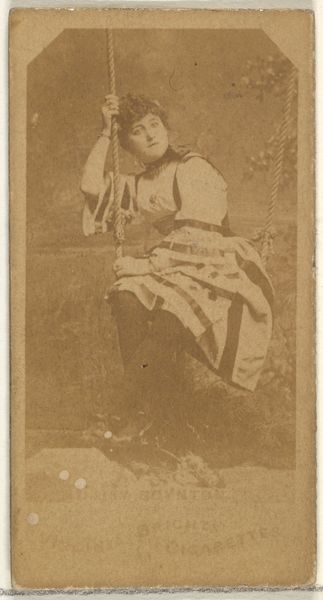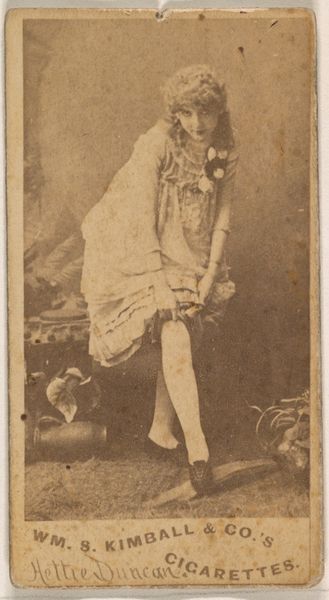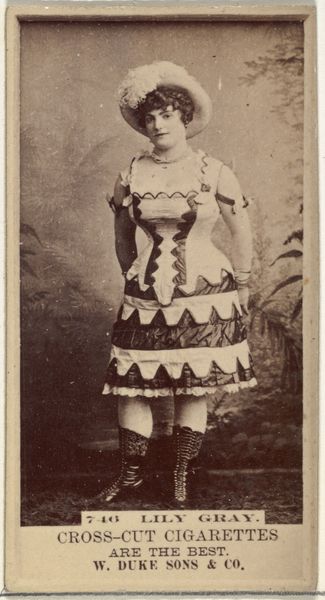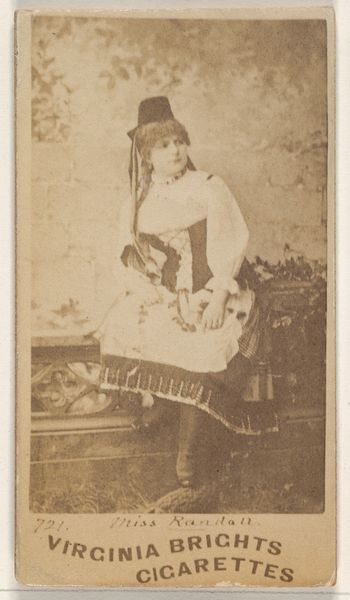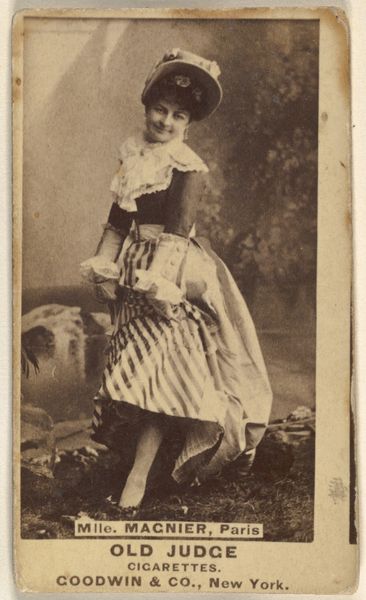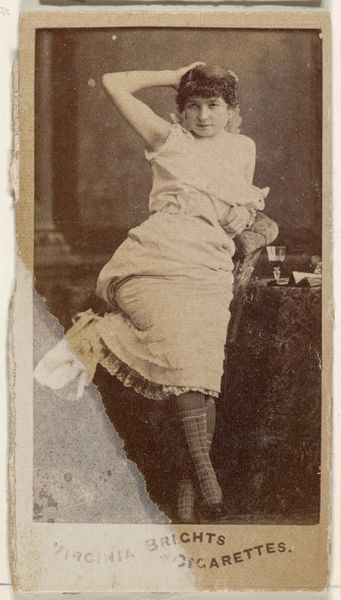
M'lle Zullio, from the Actresses and Celebrities series (N60, Type 2) promoting Little Beauties Cigarettes for Allen & Ginter brand tobacco products 1887
0:00
0:00
drawing, print, photography
#
portrait
#
drawing
# print
#
photography
Dimensions: Sheet: 2 3/8 × 1 1/2 in. (6 × 3.8 cm)
Copyright: Public Domain
Curator: This photographic print captures M'lle Zullio, circa 1887, as part of Allen & Ginter's "Actresses and Celebrities" series, designed to promote Little Beauties Cigarettes. Editor: There’s something immediately striking about the sepia tones, a melancholic feel even with her poised stance. Curator: These promotional cards were included in cigarette packs. They highlight a marketing strategy targeting male consumers, linking tobacco with female allure. Actresses and celebrities represented an ideal of beauty and sophistication. The commodification of female images, in this context, reinforces patriarchal power structures. Editor: Look at the deliberate composition, though. Her tilted head, the careful arrangement of her limbs, creates a dynamic diagonal flow against a softer backdrop. Even within this limited palette, the subtle gradation in the clothing draws your eye. The play of light and shadow on her face brings the subject alive. Curator: And that placement alongside what appears to be staged shrubbery furthers the performative aspect. These women weren't necessarily valued for their art so much as their image, reinforcing a consumerist culture dependent on spectacle. Her elaborate clothing stands in stark contrast with the growing social inequality that characterized late 19th century America. The casual racism inherent to cigarette cards themselves—considering who was excluded—presents a troubling contrast to the presumed innocent entertainment. Editor: The way the artist directs the viewer’s gaze, it’s masterful. Her confident, relaxed pose against those theatrical trappings emphasizes beauty—and promotes a feeling of access. Curator: Considering the intended audience, however, "access" may refer not simply to beauty, but an aspiration of class and control that, when interrogated from a critical standpoint, underscores issues related to power and the male gaze. Editor: The stark contrast between the softness of the pose and the deliberate angles gives the image life. Ultimately, its construction reveals both an objectification and an idealization. Curator: It prompts essential discussion, beyond the photographic details, regarding the roles women played and continue to play, in consumer culture. Editor: It definitely provides fodder for understanding this period's complex social dynamics and cultural tastes through this lens.
Comments
No comments
Be the first to comment and join the conversation on the ultimate creative platform.
